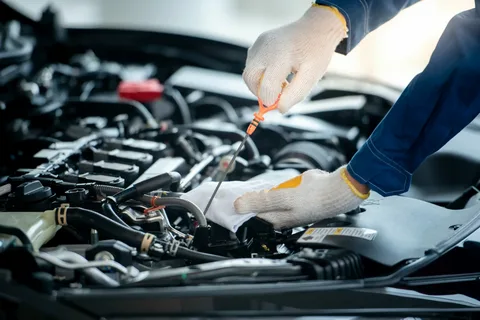In the realm of automotive care, achieving the pinnacle of aesthetics and preservation requires more than just the occasional wash and wax. Car detailing, a meticulous and comprehensive process, delves into the depths of vehicle maintenance, ensuring not just a clean appearance but also the longevity of the vehicle’s surfaces. In this guide, we explore the art and science of crafting a comprehensive detailing maintenance plan, one that goes beyond the surface to protect and enhance your vehicle.
The Essence of Detailing
Car detailing is not merely about making your vehicle shine; it’s about preserving its beauty, protecting its surfaces, and maintaining its value. A comprehensive detailing maintenance plan encompasses a range of activities, from routine cleaning to specialized treatments tailored to specific materials. The key is to understand the intricacies of your vehicle’s surfaces and address them with precision.
1. Understanding Your Vehicle’s Surfaces
Before delving into the maintenance plan, it’s imperative to understand the various surfaces of your vehicle. Different materials, such as paint, glass, plastic, rubber, and metal, require specific care. Each surface is susceptible to unique challenges like oxidation, UV damage, contaminants, and more.
- Paint: The most visible and delicate surface, paint requires regular care to prevent fading, oxidation, and swirl marks.
- Glass: Often neglected, glass surfaces need attention to maintain visibility and prevent etching or staining.
- Plastic and Rubber: Exterior plastic and rubber components are prone to fading and cracking, necessitating protective treatments.
- Metal: Wheels and exposed metal surfaces are vulnerable to corrosion and require corrosion inhibitors for preservation.
2. The Wash: Foundation of Detailing Maintenance
The cornerstone of any detailing maintenance plan is a meticulous and regular washing routine. Contrary to popular belief, a simple trip through an automatic car wash is not sufficient. Handwashing, using high-quality car wash soap and a grit guard, ensures the removal of dirt without causing scratches.
- Pre-wash Inspection: Assess the condition of your vehicle before washing. Note any tar spots, bird droppings, or tree sap that may require specialized treatment.
- Two-Bucket Method: Employ the two-bucket method – one bucket for soapy water and another for rinsing the wash mitt – to prevent dirt transfer and minimize swirl marks.
- Drying Techniques: Instead of air drying or using a rough cloth, opt for a soft microfiber towel. Pat the surface gently to prevent scratches.
3. Decontamination: Removing Embedded Contaminants
Even with regular washing, contaminants like road tar, industrial fallout, and tree sap can embed themselves in the paint, compromising its integrity. Periodic decontamination is crucial for maintaining a smooth and clean surface.
- Clay Bar Treatment: A clay bar is effective in lifting embedded contaminants from the paint. Use a lubricant to glide the clay bar gently over the surface.
- Iron Fallout Removers: Iron fallout, often from brake dust, can bond with the paint. Iron fallout removers chemically dissolve these particles, making them easy to rinse away.
- Tar and Bug Removers: Targeted products can safely remove stubborn tar spots and bug remains without harming the paint.
4. Paint Correction: Restoring Clarity and Depth
Over time, the paint may develop imperfections such as swirl marks, scratches, and oxidation. Paint correction is a step beyond regular detailing, involving the use of polishing compounds and techniques to restore the paint’s clarity and depth.
- Polishing Compounds: Choose a polishing compound based on the severity of imperfections. Fine abrasives remove minor swirls, while heavier compounds address deeper scratches.
- Dual Action Polisher: A dual-action polisher is recommended for novice detailers, as it minimizes the risk of burn-through or holograms.
- Finishing Polish: After correction, a finishing polish enhances the shine and ensures a smooth, swirl-free finish.
5. Protection: Preserving and Enhancing Surfaces
Having cleansed, decontaminated, and corrected the surfaces, the next step is protection. Various products offer a shield against environmental elements, preventing deterioration and maintaining the freshly detailed look.
- Waxing: Traditional carnauba wax provides a warm, deep shine and is suitable for enthusiasts who enjoy regular maintenance.
- Sealants: Synthetic sealants offer durable protection against UV rays and environmental contaminants, with longevity surpassing that of traditional wax.
- Ceramic Coatings: The pinnacle of surface protection, ceramic coatings create a hydrophobic barrier that repels water, contaminants, and UV rays. They provide long-lasting protection, often measured in years rather than months.
6. Interior Detailing: Beyond the Exterior
A comprehensive detailing maintenance plan is incomplete without addressing the interior. Dust, dirt, and spills can mar the interior surfaces, leading to a diminished driving experience and potentially affecting the vehicle’s resale value.
- Vacuuming: Regular vacuuming removes loose dirt and prevents it from grinding into upholstery and carpets.
- Interior Wipes and Cleaners: Use specialized wipes and cleaners for surfaces like dashboards, door panels, and leather seats. These products maintain the original appearance and prevent premature aging.
- Fabric Protection: Apply fabric protectant to carpets and upholstery to repel stains and make cleaning easier.
7. Wheels and Tires: The Final Touch
Wheels and tires often bear the brunt of road debris, brake dust, and harsh weather conditions. Neglecting them can not only affect the overall aesthetics but also lead to corrosion and deterioration.
- Wheel Cleaners: Choose wheel cleaners based on the type of wheels (alloy, chrome, painted). Avoid acidic cleaners that can damage the finish.
- Tire Dressing: Tire dressings not only enhance the appearance of tires but also provide protection against UV rays and premature aging.
- Wheel Sealants: Apply wheel sealants to protect against brake dust buildup and make future cleaning easier.
Conclusion
Crafting a comprehensive detailing maintenance plan is a journey that involves understanding, patience, and a commitment to excellence. By addressing each surface with precision, from the paint to the interior, and employing the right products and techniques, you not only enhance your vehicle’s aesthetics but also contribute to its long-term health and value. Remember, detailing is not just an activity; it’s a mindset that transforms your vehicle into a testament to care and pride.
